Tuesday 6th December 2011
Occasionally, a heated discussion flares up when a housing association or landlord removes extinguishers from a HMO or from flats with the argument that the extinguishers would do more harm than good in the hands of untrained tenants. Their decision is based on the fear that people might risk their lives fighting a fire rather than leaving the building and that the tenants might injure themselves by incorrect use of an extinguisher. Fear of vandalism and the difficulty of maintaining and assuring the working order of the extinguishers between the yearly services is of course also a consideration.
The latest case was in Richmond:
‘Residents in Richmond have been told that portable fire extinguishers have been removed from the common parts of their housing blocks for their own safety, following the findings of a fire risk assessment.’ (info4fire 16/11/2011)
However, this case was not unique, already in 2008 a similar occurance happened in Bournemouth:
‘An independent fire risk assessment ruled the extinguishers were a hazard to untrained users and may encourage people to fight a blaze. People in flats at Avon House in West Cliff Road, Bournemouth, received letters asking to remove the equipment.’ (BBC 11/03/2008)
In both cases the recommendation was based on fire risk assessments carried out by external fire risk assessors.
The reaction by the fire safety industry and the general public was instant and sometimes fierce. Typical reactions were:
‘Surely the sensible option would be to inform residents about the practical use of handling a fire extinguisher, rather than removing them altogether’ (IFEDA Nov 2011)
‘Now burn to death in safety. Here’s another couple of examples of elf’n’safety idiocy.’ (Daily Mail Nov 2011)
What is the legal situation?
It is right and correct that Fire Risk Assessments, either carried out by the landlords or by external specialist companies, work out what the risks are in a building and what protection is appropriate for the building and its occupants; and the fire risk assessor must balance the building’s construction, its inhabitants and other factors when deciding how to achieve fire safety for the tenants. The fire risk assessment can lead to certain fire protection measures to be reduced if on the other hand other fire protection measures are strengthened, eg the type of fire alarm system might be downgraded if a sprinkler system is installed etc. However, there are guidelines which, while fairly loose, describe general recommendations which must be taken into consideration. The fire risk assessment guides created for the different type of businesses/buildings help assessors and owners to come to a reasonable conclusion.
For landlords the fire risk assessment guide ‘sleeping accomodation’ is relevant. The guide states that in cases where the main risk stems from fires involving wood, paper and textiles (not kitchen areas):
‘Typically (..) the provision of one water-based extinguisher for approximately every 200 suare meters of floor space, with a minimum of two extinguishers per floor, will normally be adequate. (..) ideally no one should have to travel more than 30m to reach a fire extinguisher.’
For landlords and HMOs specifically, there is also a useful fire safety guide from LACoRS, which brings together the main rules regarding fire safety in HMOs and let properties into one easy-to-understand guide.
This guide states on page 28:
‘The provision of fire blankets and simple fire extinguishers can be useful in restricting the development and spread of small fires in their early stages. However, unless a fire is very small, the best advice is to evacuate the building (..) This is because for larger fires people need training to know what type of fire extinguisher can safely be used on, how to tackle a fire safely, and when to give up and get out. The installation of extinguishers can also lead to problems if they are not properly maintained or where equipment is discharged through malice or horseplay. For these reasons extinguishers are not recommended inside units of accomodation unless there are resident staff who are trained in their use (a caretaker, housekeeper, warden or similar)’
Although this sounds as if LACoRS is advising against installation of extinguishers, it carries on in the next paragraph:
‘In order to provide a facility for extinguishing small fires in their early stages, a simple multi-purpose extinguisher is recommended on each floor in the common parts of HMOs and buildings containing flats. It will not usually be practical to train tenants in the use of them, but basic advice should be offered at the start of each new tenancy.’
This positive confirmation of the need for extinguishers was later on re-emphasised in an update to the LACoRS guide in December 2008:
‘The positioning of portable fire extinguishers in the communal areas is deemed appropriate in order to help occupiers deal with small scale fires in their early stages and to aid their escape from the building.’
This time the guide clearly accepts the use of extinguishers by occupiers rather than just resident staff!
The LACoRS guide is unclear about the type of extinguisher to be installed. From our own experience, however, we would advise against powder extinguishers in communal areas, although powder extinguishers are of course the most general extinguisher commercially available. Water (with additives to avoid self-electrocution) or foam extinguishers are more suitable, as the damage in case of misuse and the risk of inhalation is substantially lower than with powder extinguishers.
Whilst there are confusing signals and guides out there, the consensus appears to be that fire extinguishers are very valuable when dealing with small fires at an early stage. As to the question ‘are they required in the communal areas to meet legislation’ there is still no clear answer. It would appear that this recommendation is subjective and the outcome is dependant from the individual assessor. The new register for fire risk assessors may influence this in the future. The register will provide those wishing to outsource their fire risk assessment to a third party with a database of qualified assessors.
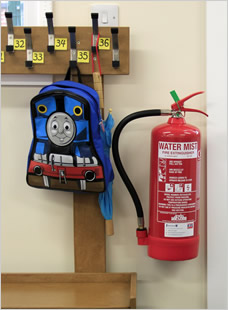 Qwackers Pre-School in Alford, Lincolnshire has been part of the life of generations of local people. It started off in a hall at the side of a babbling brook where ducks swam. The group then moved to a second-hand prefab building that was erected on the site of the John Spendluffe School.
Qwackers Pre-School in Alford, Lincolnshire has been part of the life of generations of local people. It started off in a hall at the side of a babbling brook where ducks swam. The group then moved to a second-hand prefab building that was erected on the site of the John Spendluffe School.
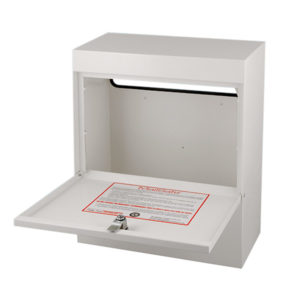 match after it. The impact is devastating. The fire races through the house and the main exit is blocked by fire. However, you can protect yourself by installing an
match after it. The impact is devastating. The fire races through the house and the main exit is blocked by fire. However, you can protect yourself by installing an 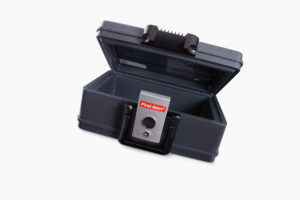
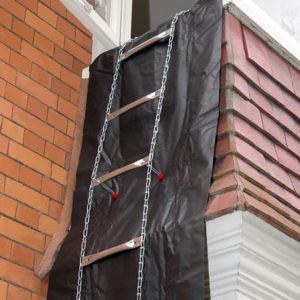 Do you have a second escape route if the hallway is in flames? Make sure you can open upstairs windows to escape. If they do not open, keep a hammer or a dedicated emergency escape hammer near the windows. If the fire brigade cannot easily reach an upstairs window, consider a
Do you have a second escape route if the hallway is in flames? Make sure you can open upstairs windows to escape. If they do not open, keep a hammer or a dedicated emergency escape hammer near the windows. If the fire brigade cannot easily reach an upstairs window, consider a 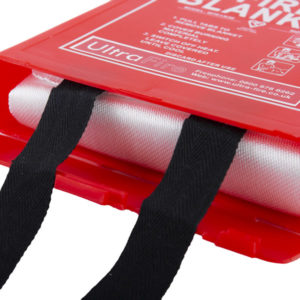
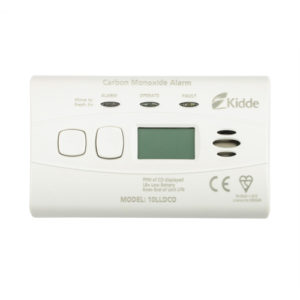
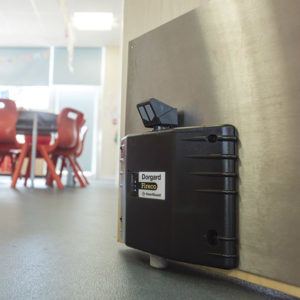 residents. The solution to this new ruling need not result in having a new system wired into the premises but can be resolved with wireless devices such as
residents. The solution to this new ruling need not result in having a new system wired into the premises but can be resolved with wireless devices such as